SUMMARY
VENOM: Assumed None*
PREVALENCE: Very Rare
ACTIVE PERIOD: Active at night
KEY ID FEATURES: Black checkered markings, dark grey/blue body, two copper stripes down body, white stripes on jaw
BEHAVIOR: Darts quickly, can flatten head, possibly capable of secreting toxin from neck groove
SIZE: Small - 60cm
IUCN: LC - Least Concerned
*Not confirmed by all sources
QUICK ASSESSMENT 0-10
GALLERY
IMPORTANT: Many snakes have significant variance in coloration and pattern even within the same species. There can also be extreme differences in appearance from juveniles to adults so it is important to never assume you have properly identified a snake.
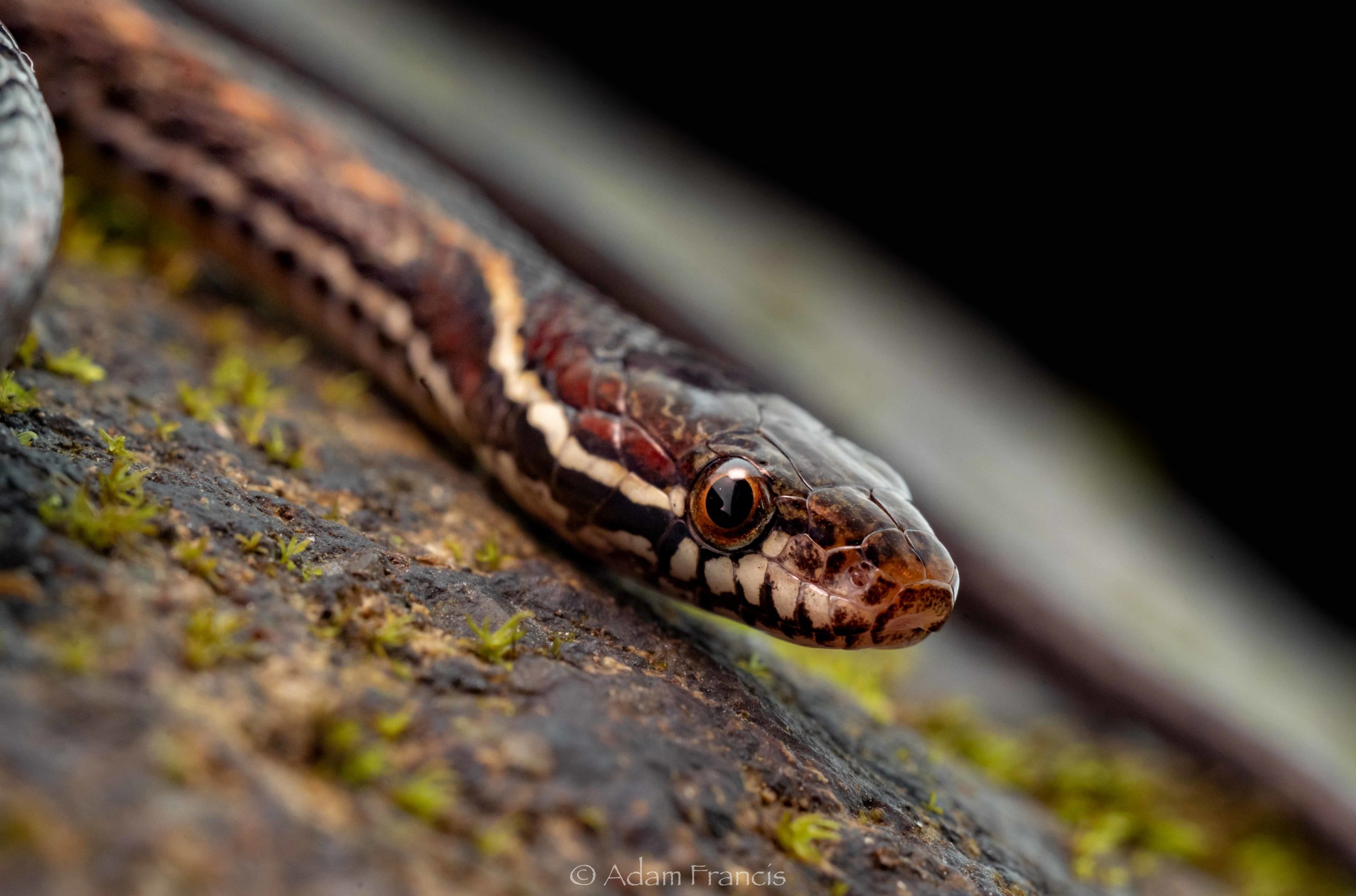

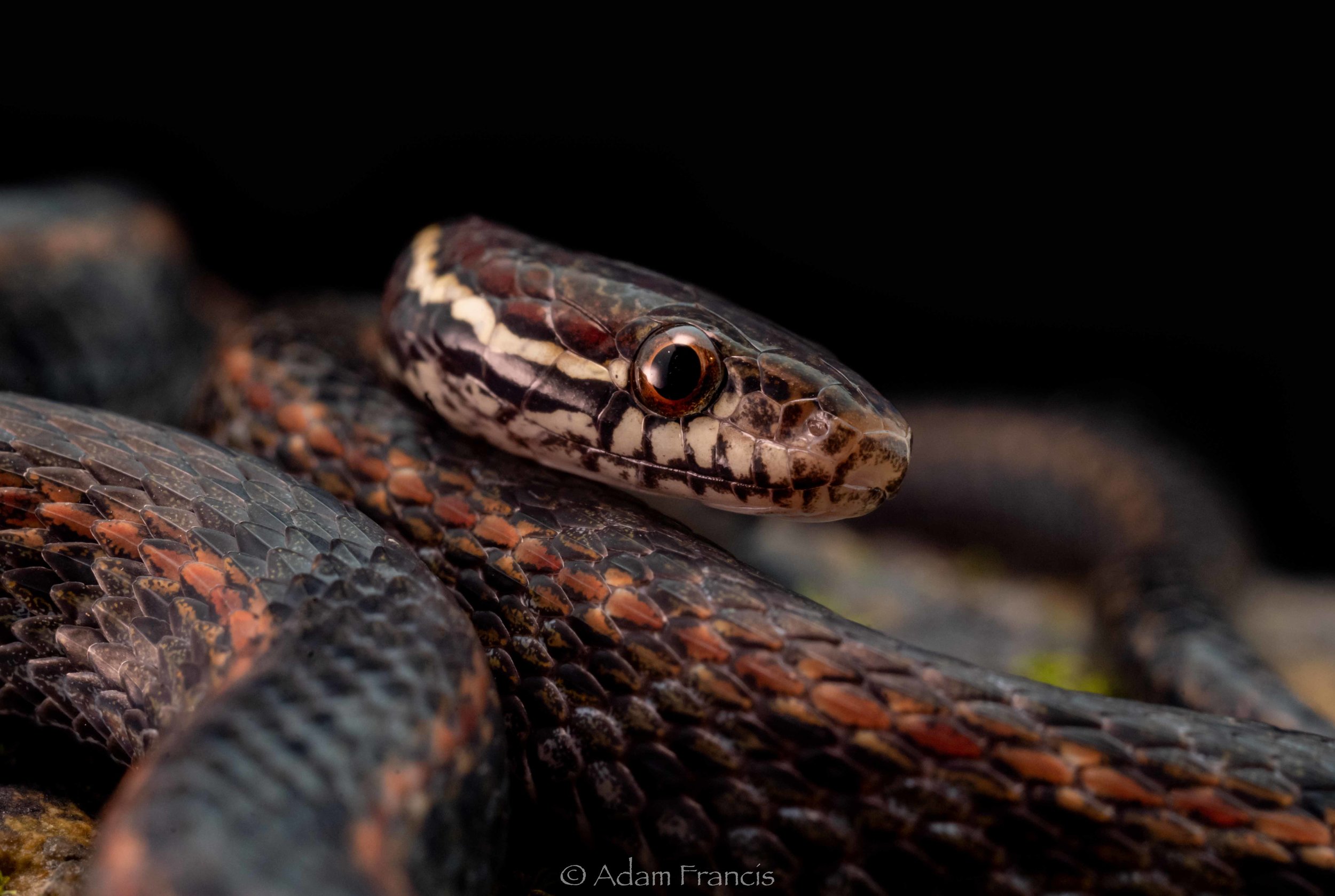
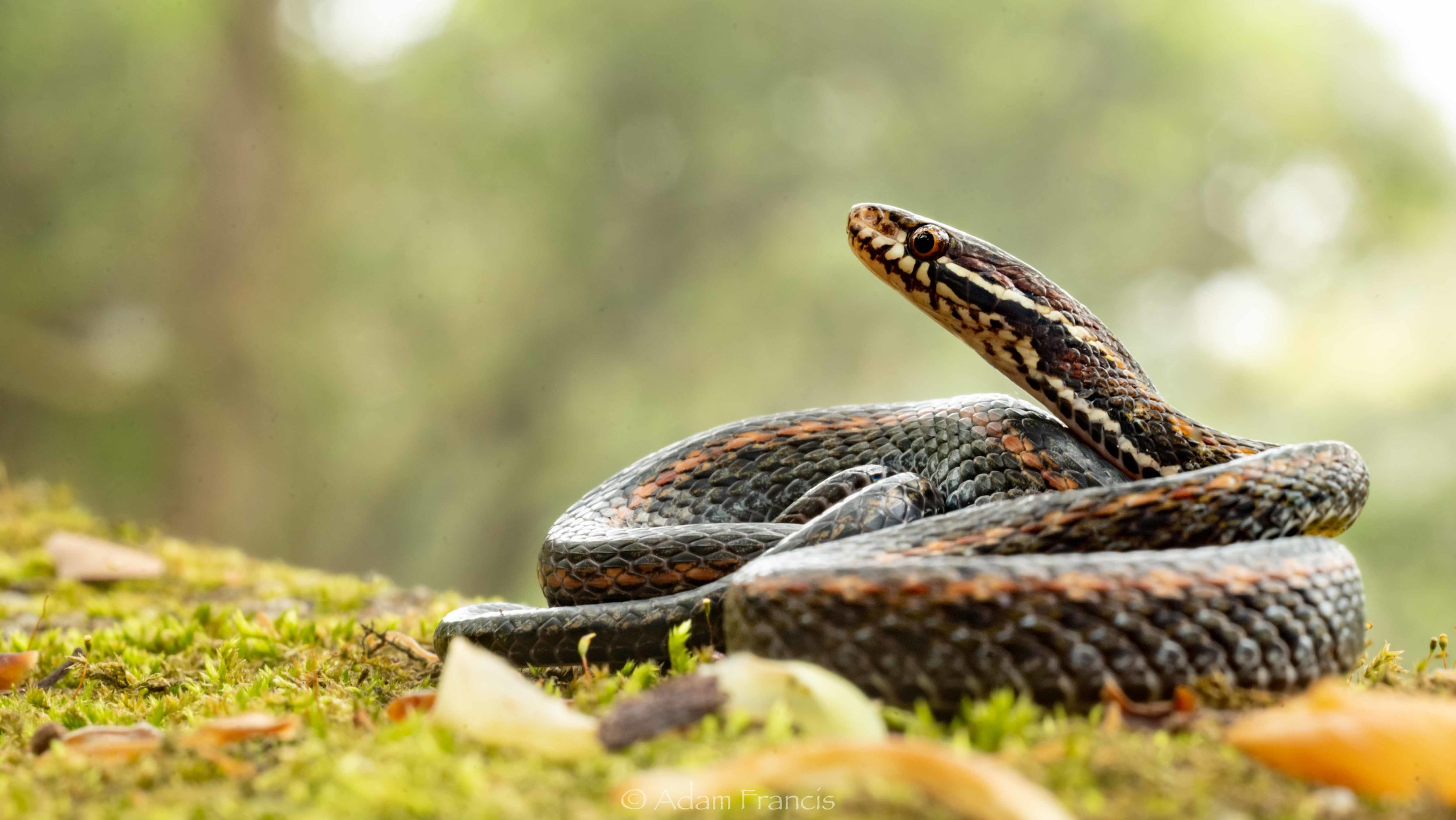
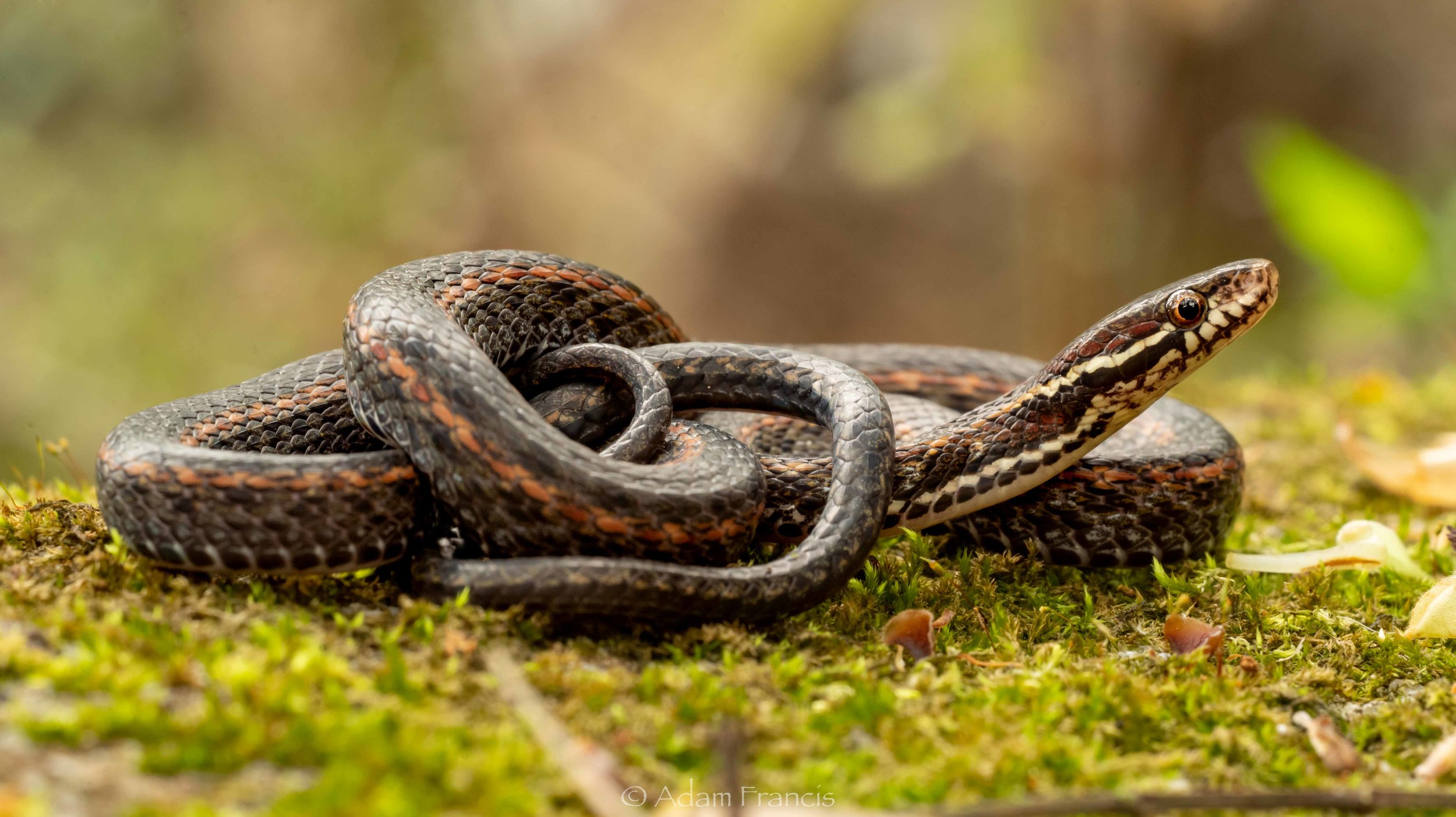
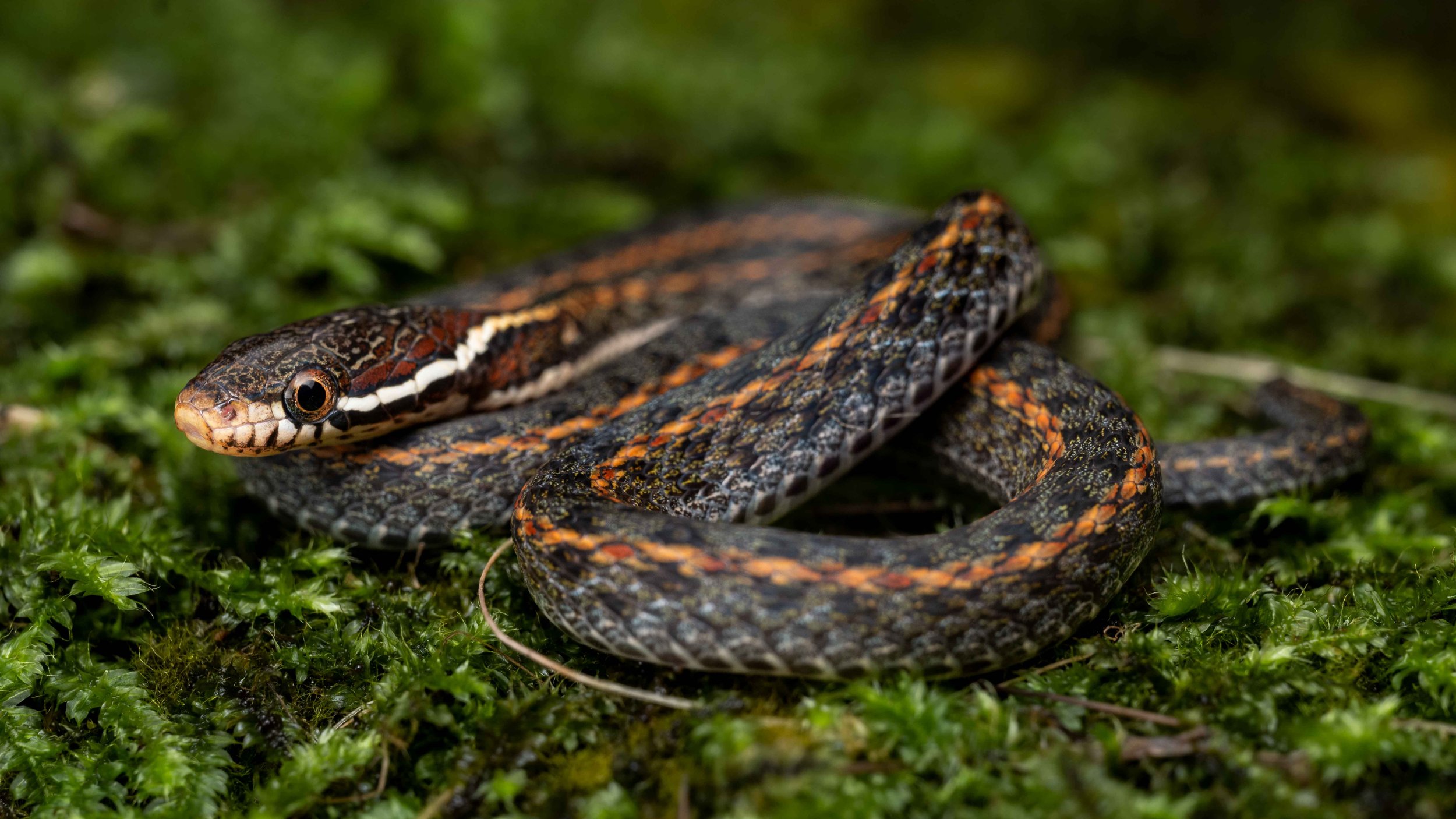
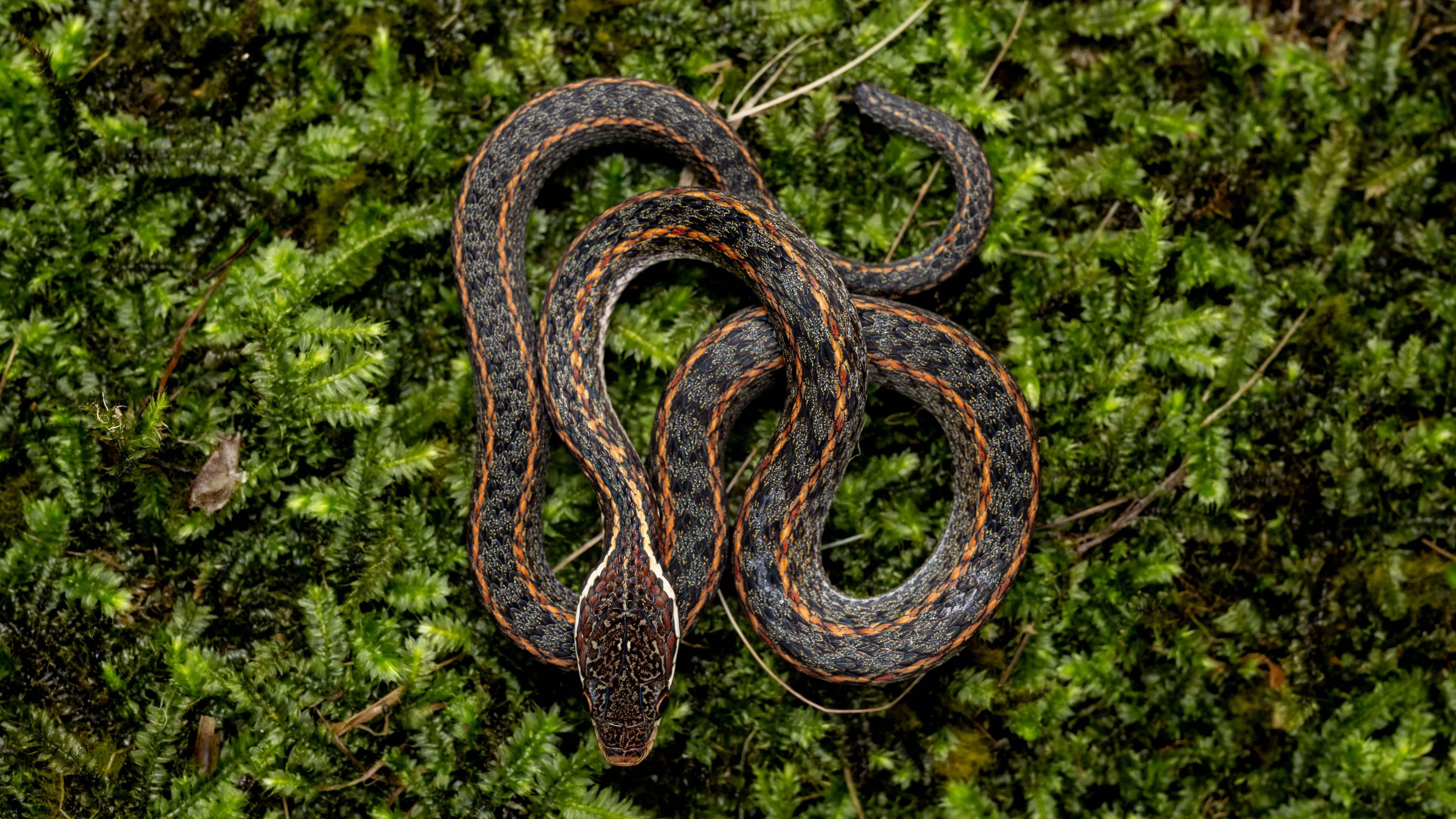
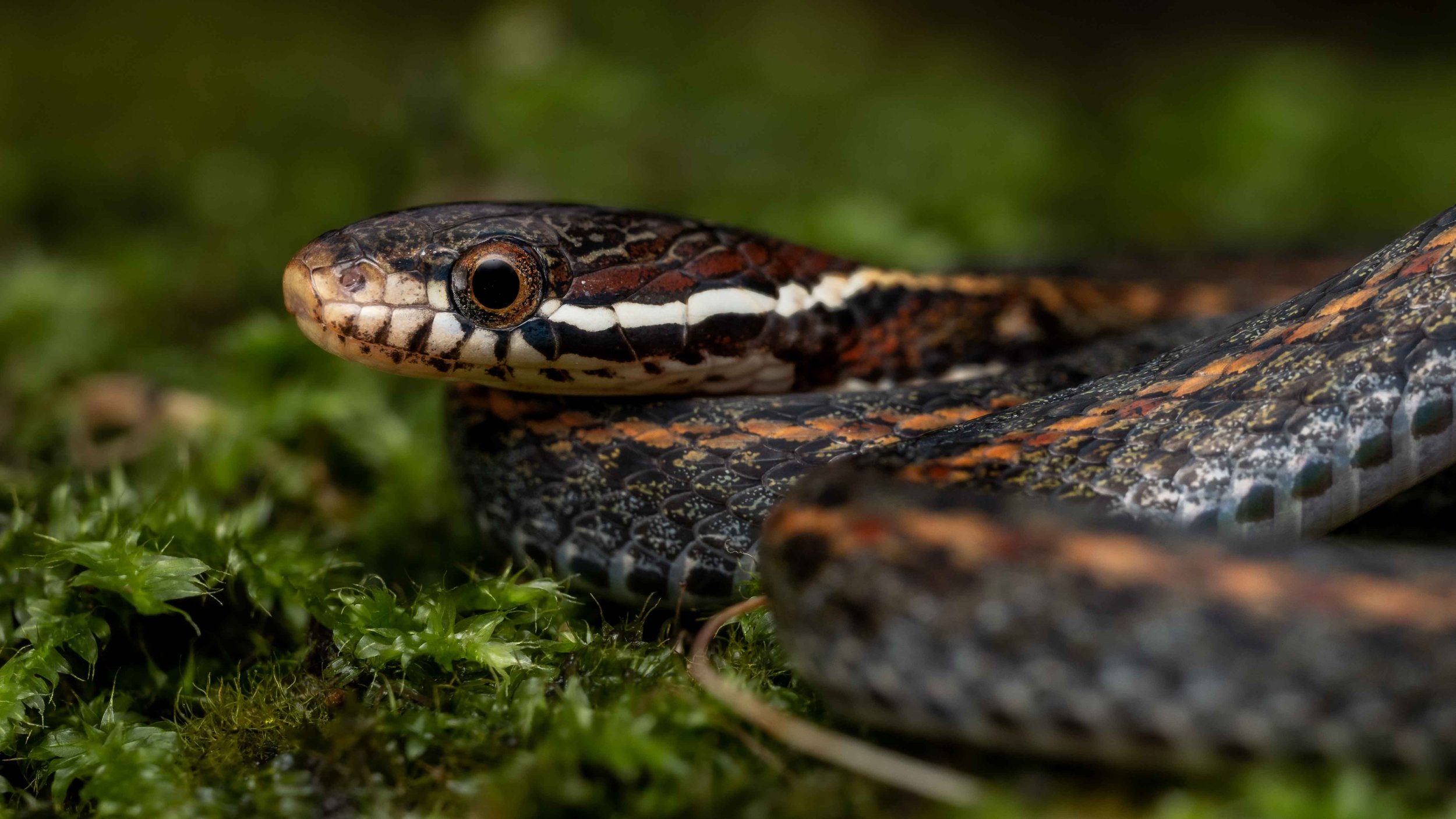
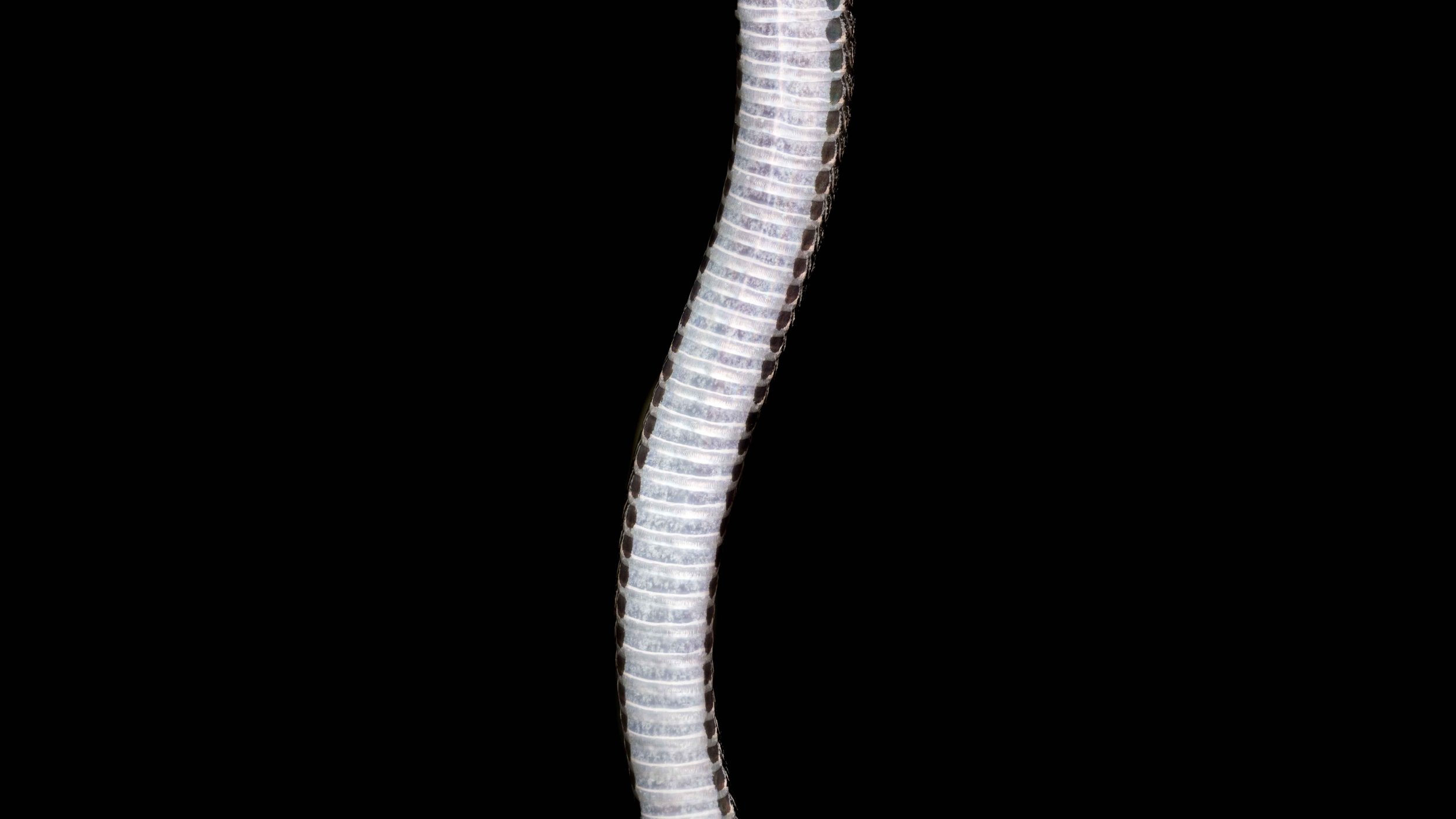
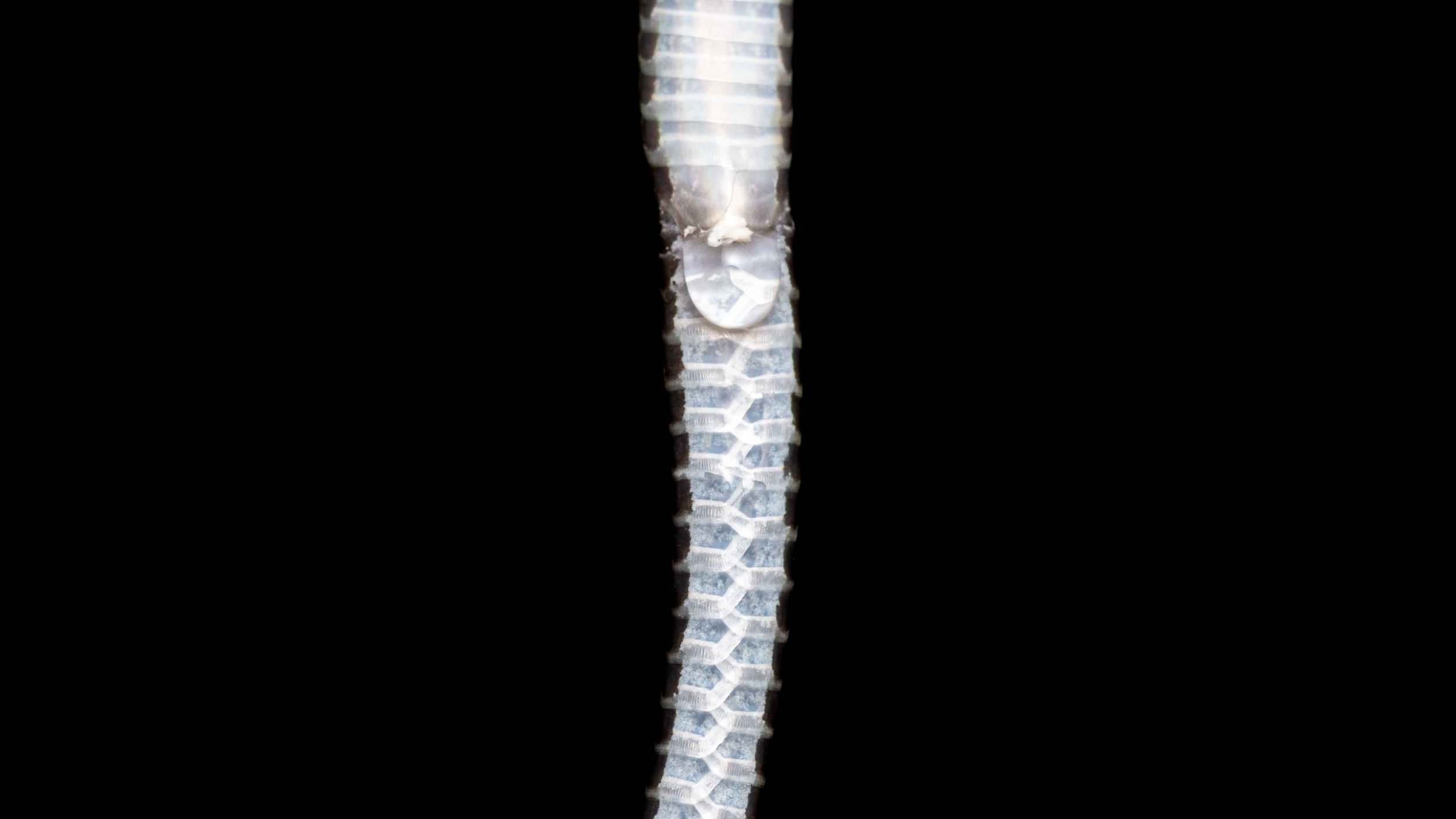
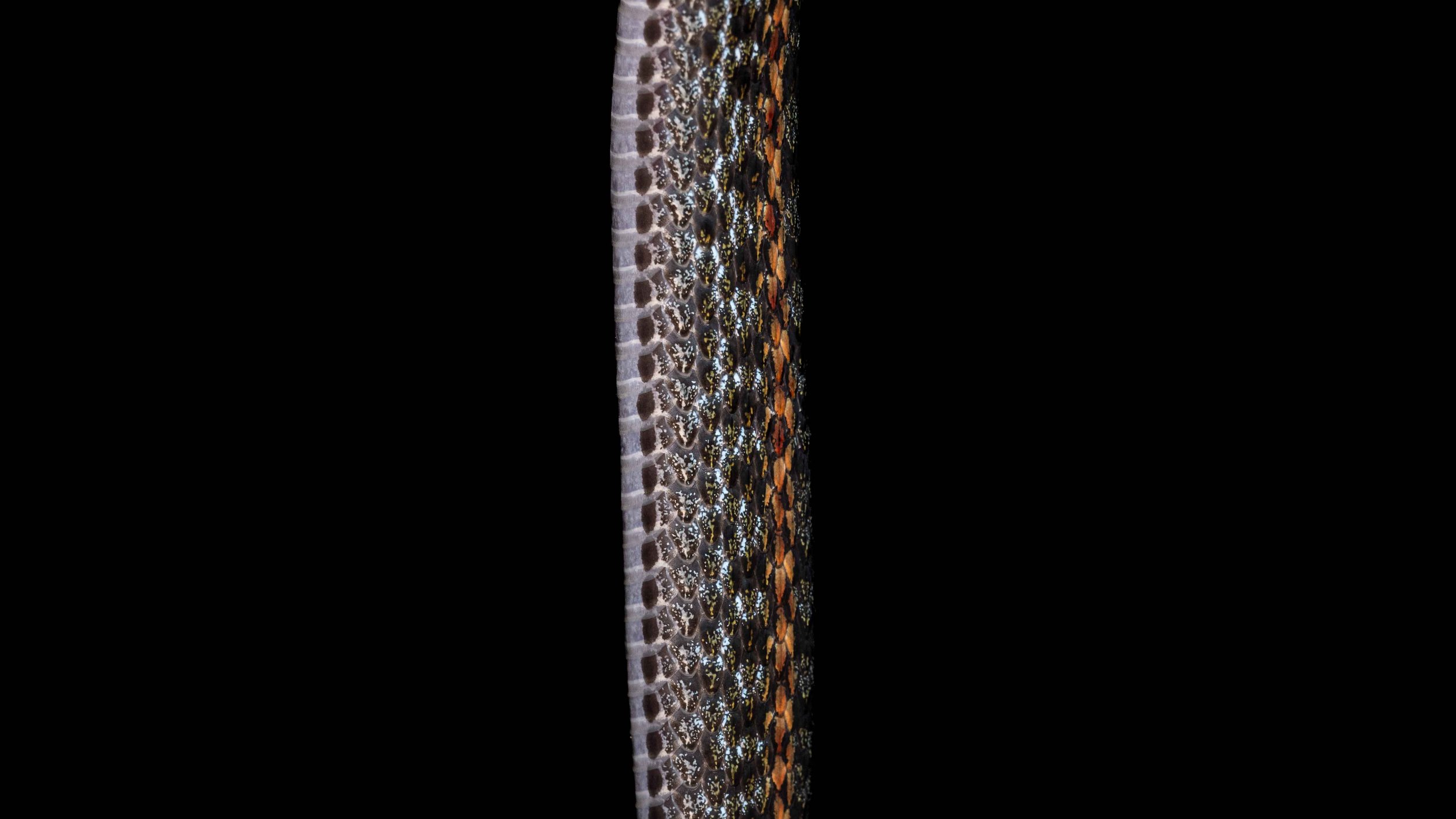
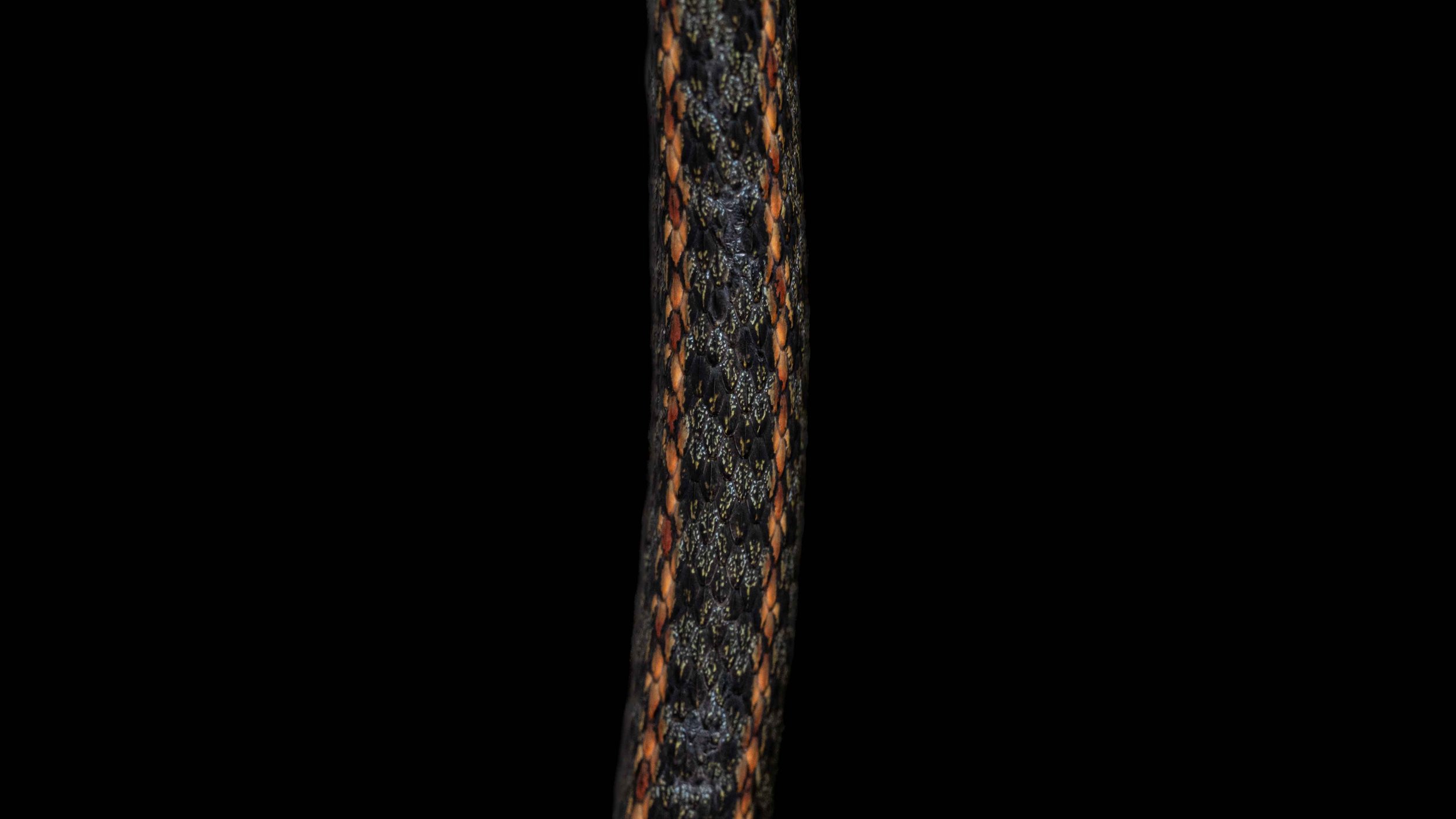

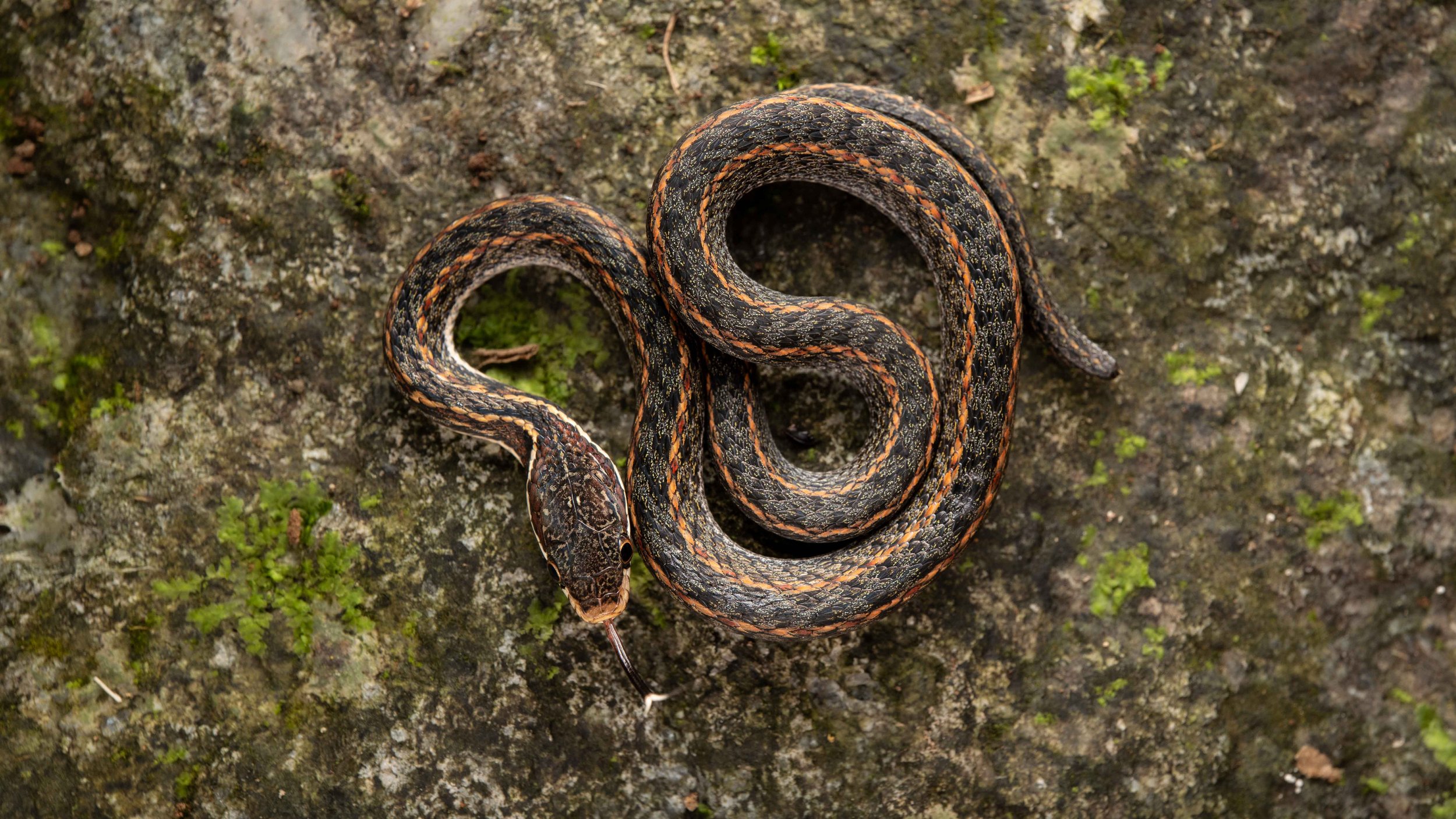
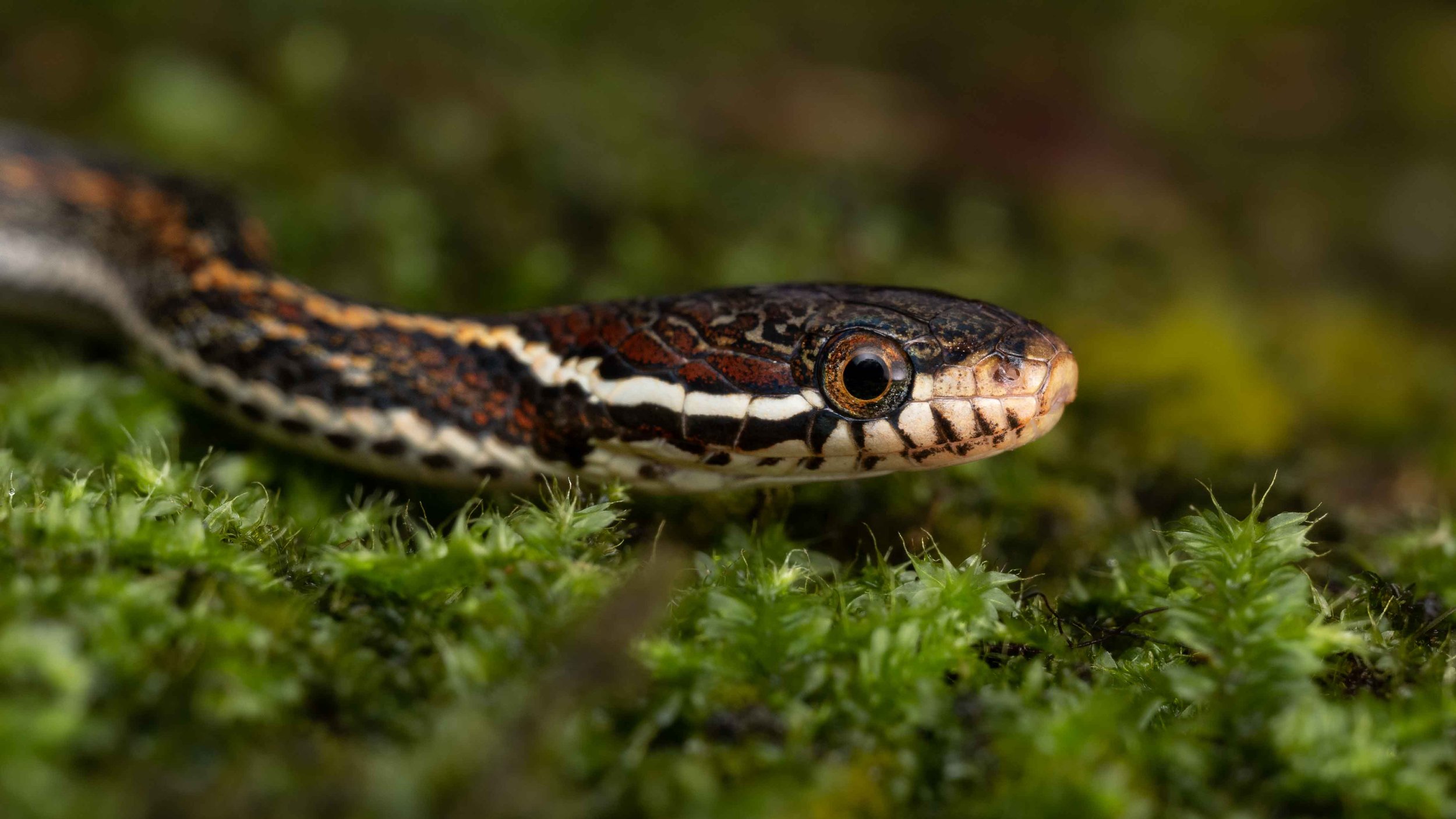
DESCRIPTION
Very few specimens of the White-browed Keelback have ever been found so not much is known about color variation. All specimens collected seem to have very similar coloration based on our research which aligns with the specimen shown here. Body is a dark grey/blue with maroon coloration on the head and neck. Two lateral stripes run the length of the body on either side of the dorsal ridge. The stripes are copper in color and actually consist of red and yellow alternating sections when viewed up close. Black checkering runs the length of the body on the grey/blue sections. Color changes to dark black on the sides just above the ventrals (belly scales). Ventrals are a pearlescent bright white with no markings. Eyes are proportional relative to the body with round pupils and orange/brown iris. True to its common name a white stripe runs from the back of the eye along the jaw and down the back merging with the copper colored lateral stripes starting at the neck. Lower jaw line also shows a white stripe running from the mouth down the neck and fading out shortly after just above the ventral scales. ‘Occipital’ or head scales are large and mottled black and dark green. Long tail relative to body length as compared to other endemic species.
BEHAVIOR
Due to the rarity of the species in Hong Kong behaviors are not confirmed but it is generally agreed that the White-browed Keelback is active at night. Its flat small head seems well designed for foraging under rocks in streams and the species has been documented to feed on small amphibians. It may also eat small stream fish and fresh water shrimp. When startled it will flatten its head out similar to the Chinese Mountain Snake. It may also lower its head and raise its tail as a decoy like the Common Wolf snake. The snake was also observed to coil into a small ball and knot its tail around fingers and wrists when held, but it was never observed to bite or use false strikes. It was observed on one occasion with a milky substance on its neck but it is not clear what the substance was or if it was produced by the snake. No research to date supports the presence of a nuchal gland. The White-browed Keelback can be quick and darty if startled or grabbed and seeks cover in leaf litter and by hiding under rocks.
HABITAT
Found more commonly at mid to high elevations ranging from 100 to 800 meters. Assumed to live in leaf litter and small mountain streams, always staying close to bodies of water. Very elusive and well camouflaged.
MISTAKEN IDENTITY
NO SNAKE SHOULD EVER BE HANDLED BY ANYONE BUT EXPERTS: The White-browed Keelback is a unique snake in Hong Kong that is not easily mistaken for any other endemic species, but its neutral color tones mean it could possibly be mistaken for other neutral toned snakes. Visit the 'Practical Venomous Snake ID' section of the Snake ID page for tips on identifying some of the more common venomous species.

